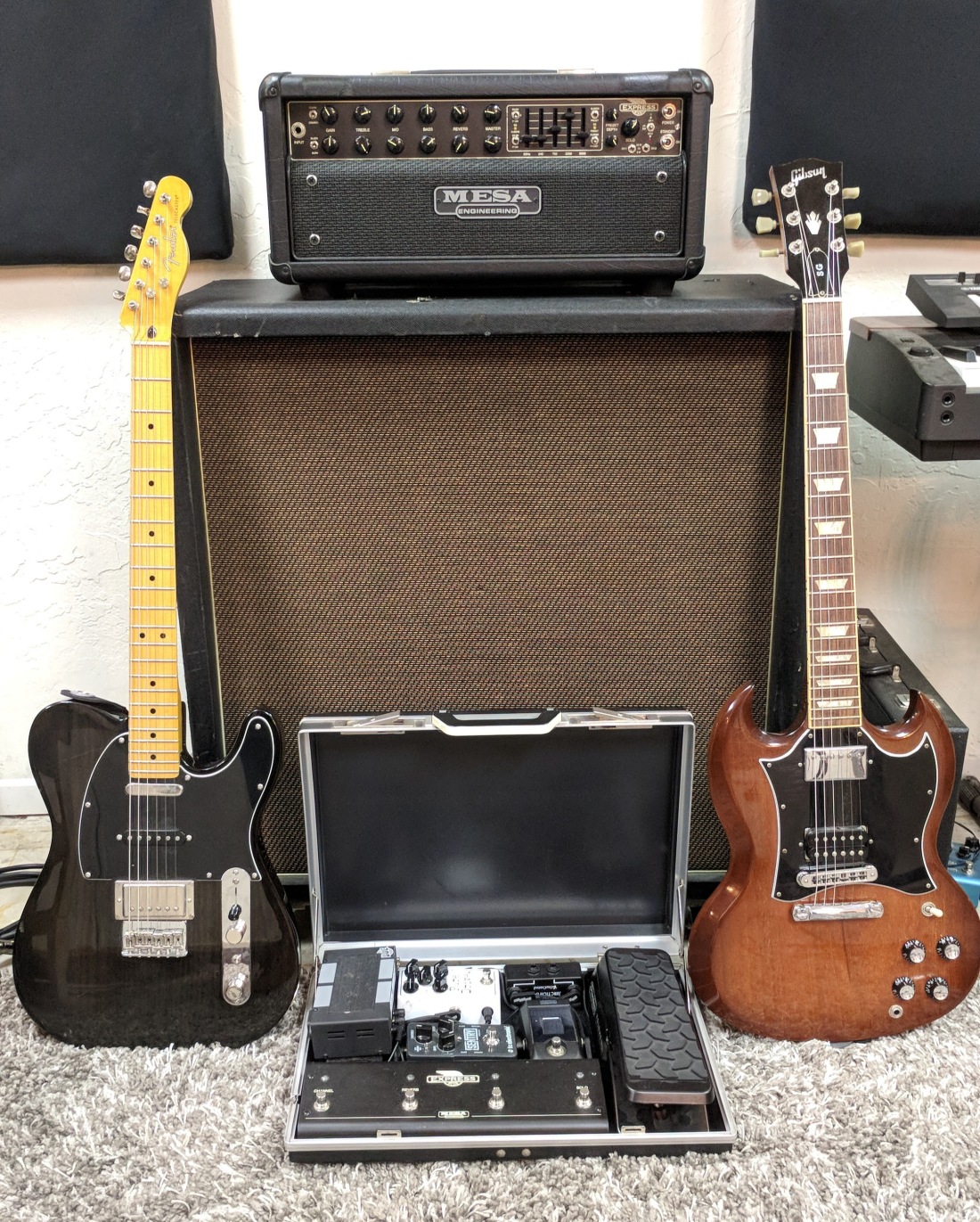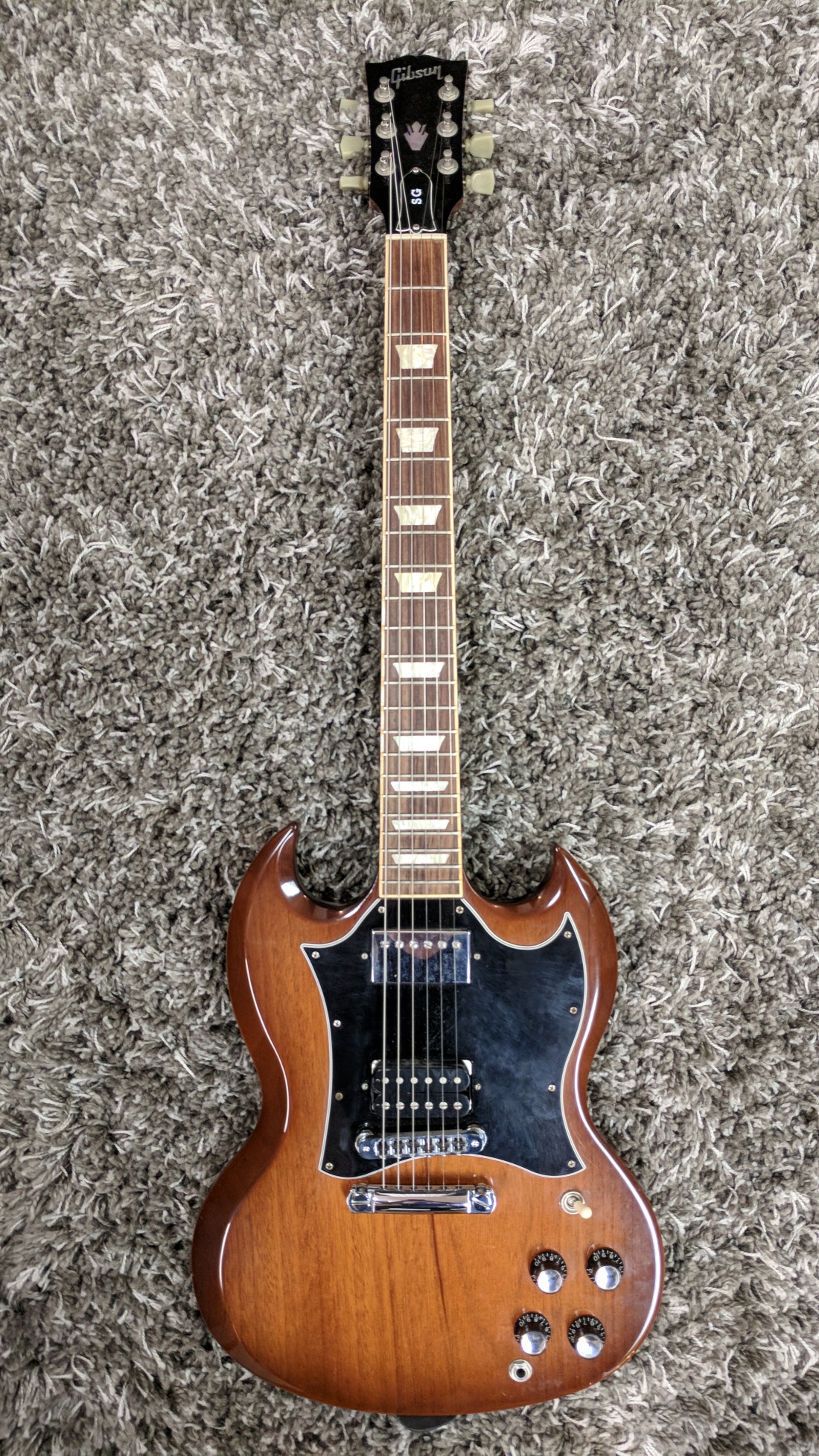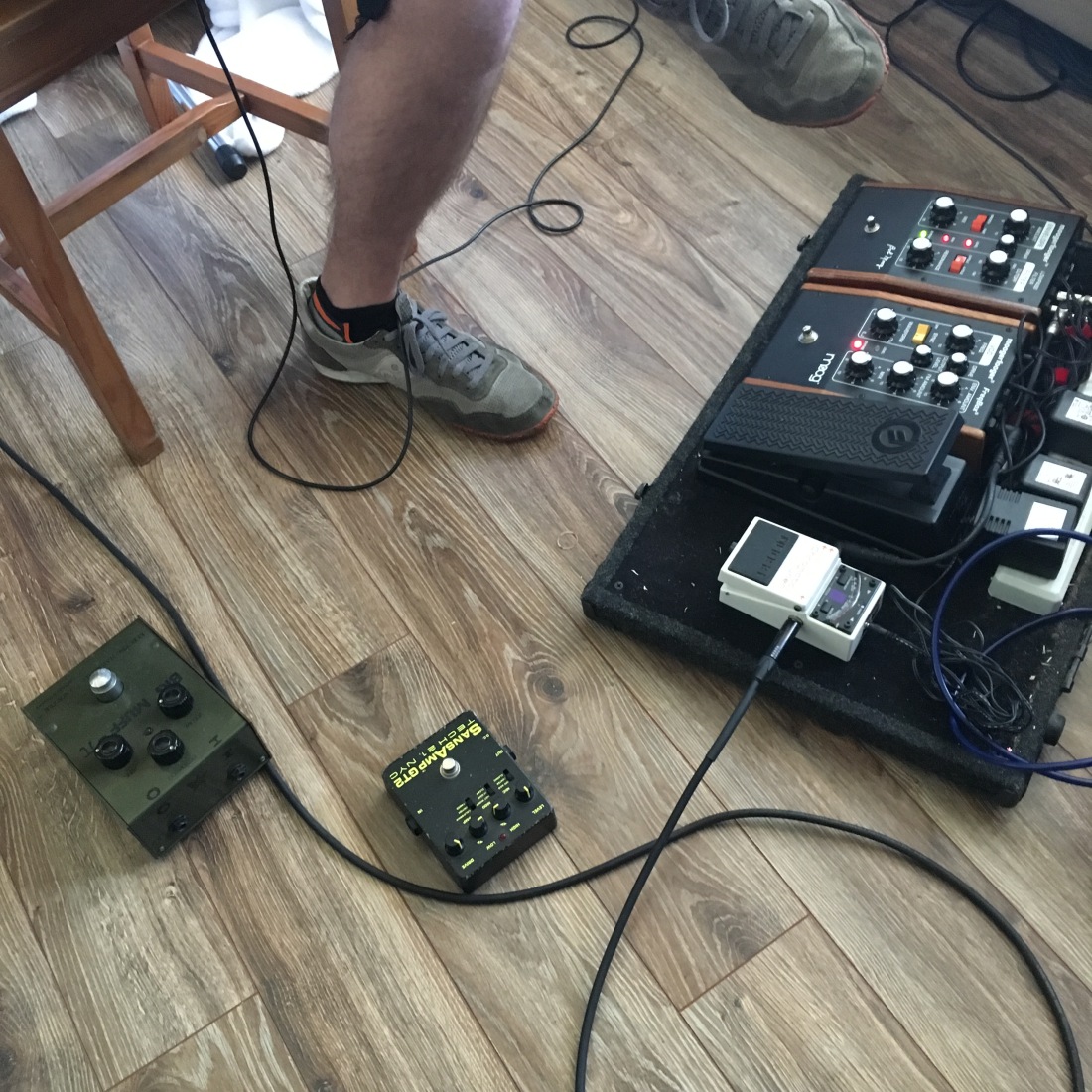
Hard to Hit: Facebook / Instagram / Twitter / Website
1. Hey Peter, talk me through your live rig: Why is that Mesa amp your No. 1? I’m surprised not to see any modulation or delay/reverb effects on your board. What else would you add if you had the option?
I decided to go with the Mesa 5:25 Express + for live for a few reasons. First and foremost, it just sounds the best for the kinds of heavy (but not too heavy) tones I’m going for, but also because of its flexibility and because it packs a ton of features into a head that will be easy to move around and keep in good shape. It has enough foot-switchable options that I was able to keep my pedalboard simple, which was important to me because for this band I decided I wanted to be able to focus more on playing and having a good time than setting up a complicated rig, and having extra patch cables, etc. to worry about. In addition to switching between a high and low-gain channel, it also lets me have foot-switchable reverb, two foot-switchable EQs per channel (the graphic EQ and the preset EQ knob which is a nice sounding midscoop) and also a foot-switchable boost. All that saves me 3 or 4 pedals on my board, which means I can keep it small in the one briefcase and I don’t have to use the effects loop since everything on the board is in front of the amp so that’s fewer cables to have to set up, trip over, or break.

I didn’t bother with modulation, delay, or pedal reverb on this board because as of right now, the songs we’re playing don’t really call for it. There’s definitely a few spots where I would normally use my Carbon Copy a little bit, but not so much that I wanted to add the complexity or the tap dancing. I could definitely see changing it up and adding the Carbon Copy, Timeline, and Moore modulation pedal in the future if we end up using more effects for our next album. In which case I’d think about finding a smaller volume pedal, tuner, and/or power supply to free up some space.

2. How did you settle on both an SG and a Tele?
All our songs right now are in drop D except one in drop C, so I’m using the Tele for the bulk of them and the SG for the one drop C song. Ironically, the Tele is the cheapest guitar I own, but somehow it just feels the best to play; the weight and balance is nice, the neck is fast, and I like the look of it. I swapped out the stock Fender humbucker in the bridge for a Seymour Duncan SH4JB and it sounds great. The SG handles the lower tuning the best out of all my guitars and it’s my second favorite, so it was an obvious choice.

3. Out of all the effects you used on the record, which one got the most use and why? Were there any other effects you wish you had on-hand that you would’ve used?
The other pedals that got used the most on the record were the Tube Screamer and EQ. They were on pretty much the whole time, pushing our other guitar player’s amp a bit more for one of the main guitar tracks. I think I used a little Carbon Copy and reverb from the Strymon Blue Sky here and there, but for the most part, our guitar tones are pretty much straight-forward gain.

4. Talk to me about the extra amps in this pic…what’d you use ’em for?
The other amps are a 1964 Ampeg Jet J-12, Peavey 6505 Mini Head, and Fender ’94 Twin (not to be confused with a Twin Reverb, this one has two drives that are actually pretty cool). I was planning on using the Peavey for the main guitar doubles, but our other guitar player’s Peavey XXX won out. I actually used the Fender for all the leads since its drive has a nice mid-range bite that compliments the mid-scooped Mesa and Peavey well. The Ampeg unfortunately didn’t make it onto the EP since I mainly use it for cleans or light bluesy drive, but it gets used in the studio all the time.

5. You guys have a new EP coming out — how did the recording process go? Who did you work with and where did you record it?
In addition to playing in the band, I’m actually a full-time professional engineer, so I recorded most of it at my studio: The Grey Brick Recording Studio. Two of the songs were recorded up at Catacomb in Orange County last year before I joined the band, but we ended up making some changes to those songs so the only part of those recordings we really kept was the drums; everything else for the five songs I recorded, mixed, and mastered.

6. If you got to buy ANY piece of gear for one of your band mates, what would it be and why?
That’s a hard one since we’ve all got our rigs pretty well dialed in right now. Our bass player just got a new P-Bass and has a great Amgeg SVT and cab, our other guitar player’s Peavey XXX and Tele sound great, and our drummer just refinished his kit. Really the best thing for the band would probably be nice in-ear monitors. I just got some Shure SE315s which are awesome and some of the other guys are just using normal earbuds. Not the sexiest answer, but hearing protection is important, kids!
7. Besides the EP release show at SOMA on Friday, December 1st, what else does Hard to Hit have coming up?
The release is definitely the biggest news, it’s been almost a year since Hard to Hit has played because of some changes to the lineup and we decided to just focus on the EP before getting back out on stage, so this will actually be the first show back with the new lineup. We will also be releasing a video the same day. The following weekend, we will be doing a short run up to Bakersfield, Grover Beach, and one other city that’s still TBD. We will have another local show in February and we’re planning on a bigger West Coast tour for March.








